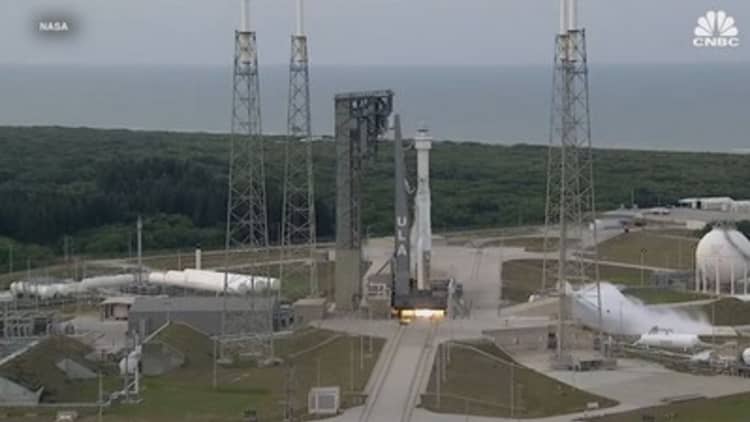Boeing’s Starliner capsule is seen while approaching the International Space Station on June 6, 2024 with two NASA astronauts on board.
NASA TV
Boeing’s Starliner capsule made a delayed docking with the International Space Station on Thursday, after NASA called off an initial approach due to a thruster problem.
The spacecraft docked with the ISS at 1:34 p.m. ET.
There are now two U.S.-built crew spacecraft docked with the ISS for the first time, as Boeing’s Starliner joined SpaceX’s Dragon capsule “Endeavour” at the orbiting research laboratory.
NASA flight controllers called off a previously scheduled approach to resolve issues with Starliner’s propulsion system. Starliner has 28 jets, known as its reaction control system (RCS) engines, that help the spacecraft make small movements in orbit.
NASA was troubleshooting five of the jets that were not operating and was able to recover four of the malfunctioning jets after testing.
Sign up here to receive weekly editions of CNBC’s Investing in Space newsletter.
NASA astronauts Butch Wilmore and Suni Williams worked with NASA’s flight controllers to test fire the thrusters in an attempt to recover the spacecraft’s full propulsion system.
Wilmore and Williams were told by NASA capsule communicator, or CAPCOM, Neal Nagata that the 12:15 p.m. docking attempt had to be called off due to the ISS’ zero fault tolerance for a spacecraft control problem.
CAPCOM Nagata had the astronauts hold the spacecraft beyond the “keep out sphere,” an invisible boundary around the ISS that serves as a safety measure, while diagnosing the problematic thrusters.
Boeing’s Starliner launched successfully on Wednesday to begin the crew flight test, marking the first time the capsule is carrying astronauts to space. The mission represents the final major step before NASA certifies Boeing to fly crew on operational missions.
The spacecraft was once seen as a competitor to SpaceX’s Dragon. However, various setbacks and delays have steadily slipped Starliner into a backup position for NASA, with the agency planning to have the companies fly astronauts on alternating missions.








